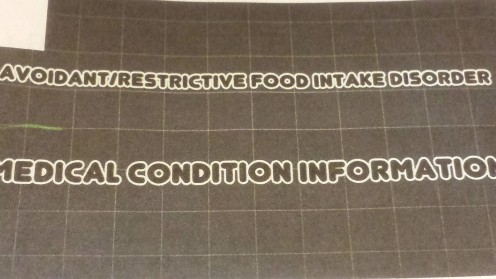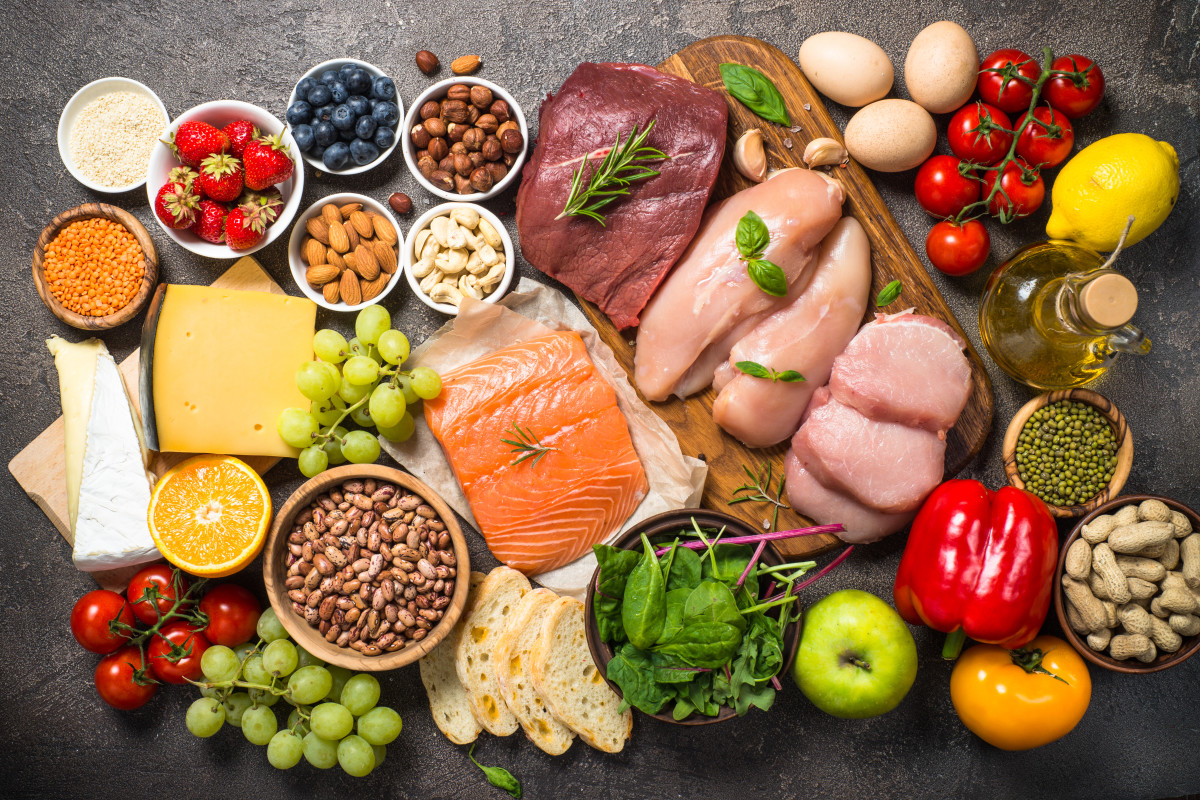The Many Different And Various Types Of Eating Disorders
Many Various Eating Disorders

Strong Desires To Be Thin

Disturbing Eating Behaviors
The average view by the general public in America today is that many various and different types of eating disorders are simply considered to be lifestyle choices. According to the national eating disorders association the eating disorders are currently classified as medical illnesses. The general causes for eating disorders is not yet clear, but many specialist are presently researching the possibility of a genetic trait inherited from parents. In fact, the many different eating disorders are actually very serious and often fatal illnesses. Each eating disorder that a patient is diagnosed with is different and varies widely from the next patient. Sometimes a patients irregular eating habits will stem from severe distress over there own body, heavily overweight, or even an out of shape body. This illness causes a variety of different disturbances to many patients eating behaviors and attitudes. An eating disorder can develop at any stage in a persons life. Normally the eating disorders commonly appear during the teenage years or maybe even into young adulthood. Most patients will suffer to simply maintain a healthy and normal body weight. There are very unclear explanations for why those who have experianced very traumatic episodes of sexual abuse throughout there lives are much more likely to develop an eating disorder. Typically the vast majority of eating disorders tend to coexist with other illnesses such as depression, substance abuse, and extreme cases of anxiety disorders. Currently the most common eating disorders in America are all basically classified as a medical illness, but the many devastating symptoms from the illness must be addressed.
Anorexia Nervosa

Extremely Thin Individuals

A Intense Fear Of Gaining Weight
The modern day eating disorder of anorexia nervosa has the highest mortality rate of any of the other particular eating disorders. Most patients who suffer with a anorexia eating disorder are generally extremely thin individuals because they always dwell on the intense fear of gaining any more weight. The majority of Anorexic patients truely believe that there extremely overweight, but in reality there actually extremely underweight. A anorexic patient will always tend to severly restrict the amount of food that they allow themselves to consume and continually obsess over weighing themselves compulsively everyday of the week. The vast majority of anorexic patients will only allow themselves to eat certain healthy foods and only allow themselves to consume extremely tiny portion sizes. There are currently many dangerous symptoms of having a anorexia eating disorder and they typically will include severe thinning of the bones, dry yellowish skin color, problems with constipation, lethargy, feelings of tiredness, extreme sluggishness, very brittle nails, mild anemia, drop in internal body temperatures, brittle hair, the muscles wasting away, Infertility, low blood pressure, multi-organ failure, brain damage, very slow breathing and pulse. Many patients presently struggling with Anorexia eating disorders often will die suddenly from severe complications with starvation or often times they will even commit sucicide.
Bulimia Nervosa

Overindulge And Then Profuse Vomiting

No Control Over Eating Habits
The bulimia nervosa disorder is unique because normally patients who suffer are very capable of maintaining a healthy or normal body weight. The eating disorder generally causes a patient to experiance frequent episodes of eating astounding amounts of food and having absolutely no control over there eating habits. After consuming such large quantities of food a patient will have harsh compensations for greatly overindulging themselves. Whenever a patient living with the eating disorder overindulges with food there normal symptoms often include vomiting profusely, repetive use of laxatives, exessive use of diuretics, periods of fasting, intestional distress, severe dehydration from the relentless purging of fluids, exercise increase, or could possiably be a combination of all symptoms. The most common symptoms with the eating disorder include extreme irritation from laxative abuse, acid reflux disorder, and many other gastrointestinal problems. Other symptoms such as worn tooth enamel, increasingly decaying, and sensitive teeth as a result of constant exposure to high levels of stomach acid. Many patients throats are normally very chronically inflamed and the salivary glands in the neck tend to be significantly swollen. Another common problem is the various different electrolyte imbalances. It's rather typical to notice random fluctuations with a patients mineral levels. Normally the patients sodium levels are either entirely to high or dangerously to low. The same effects will commonly happen with the calcium and potassium levels also.These many random fluctuations with the mineral levels of patients can lead to a stroke or even a heart attack.
Binge-Eating Disorder

Eating Large Quantities Of Food

Most Common In The United States
A patient diagnosed with the binge-eating disorder commonly will loose complete control over there eating habits and there many bizarre eating behaviors. The majority of patients who currently live with the eating disorder tend to be morbidly obese or extremely overweight. According to the national eating disorder association the binge-eating disorder is the most common in the United States. Regardless of a persons age or gender the eating disorder can develop in humans at any given time. The health professionals and specialist working in the field notice a particular trend with the eating disorder. Binge-eating commonly effects more women than men. American women are two and a half times more likely to develop a binge-eating disorder than American men. The symptoms of a binge-eating disorder commonly include eating when a person isn't hungry, eating at very high rates of speed during a binge episode, frequent dieting with no weight loss results, eating whenever a persons stomach is already full, always eating overwhelming amounts of food, and eating entirely to many large plates of food in a specific amount of time. There are many common binge-eating behaviors associated with the eating disorder. Many patients who live with the eating disorder will commonly always choose to only eat alone or in secret to avoid any type of embarrassment. Most patients will feel highly distressed, terribly ashamed, or horribly guilty about eating more food.
Pica Disorder

A Lady Who Often Eats Bar Soap

Eating Non-Nutritional Food Sources
The pica eating disorder involves a patient who develops an appetite for substances that are non-nutritional and deliver absolutly no vitamins to the human body. Some common examples of non-nutrional substances that pica disorder patients tend to enjoy eating include ice, notebook paper, chalk, red clay, drywall, dirt from the backyard, potting soil, woodchips, paint, metal shavings, glass slivers, sand, burnt matches, and even wool. Injesting such un-natural substances will cause intoxication in small children and often results in a impairment in the mental development. The eating disorder is much more common in women and children. Normally a person who shows a consistent pattern of consuming non-food items for atleast one whole month is diagnosed with a pica eating disorder. Many patients with the eating disorder are often forced to undergo surgical emergencies due to complications with intestional obstructions. Another issue patients commonly experiance with the eating disoder are the many infections after ingesting dirt that evidently contained large traces of animal feces. The high risk of developing lead poisoning is always a problem for those choosing to consume paint. A Pica eating disorder is generally linked to other forms of mental or even various types of emotional disorders.The majority of patients presently living with a pica eating disorder are highly prone to developing serious nutritional deficiencies.
Avoidant/Restrictive Food Intake Disorder

Extremely Limited Food Intake

Nutritional Deficiencies
The avoidant/restrictive food intake disorder is also on occasions known as selective eating disorder. On average, with a dignosis of the disorder a patient will greatly limit there food consumption. A patient will only choose to eat a particular food simply based upon the foods appearance, smell, taste, and texture. Many patients with the eating disorder continusly say they would really perfer to change there current eating habits if there was any possibly way to do so. Commonly patients living with the eating disorder suffer profoundly with gastrointestinal reactions, violent retching, profuse vomiting, and relentless gagging. Typical side effects normally include substantial weight loss and severe nutritional deficiencies. Many of those living with avoident/restrictive food intake disorder will eventually become completely dependant on a feeding tube or a variety of different dietary supplements.
Rumination Syndrome

Extreme Weight Loss

Effortless Rugurgitation
The basic causes for rumination syndrome is currently unknown. A disorder that causes patients to effortlessly regurgitate the majority of there meals after eating due to involuntary contractions of muscles around the abdomen area. Some patients may regurgitate food within one minute of consuming food and others could take upwards of twenty minutes to regurgitate there food. Normally a rumination eating disorder will affect infants, young children, and the ten percent of people living with cognitive disabilities. The common symptoms associated with rumination Syndrome include nausea, intense bloating, severe abdominal pain, constipation, horrific dental decay, acid induced erosion of the esophagus, unquenchable appetite, extreme weight loss, and even malnutrition.









